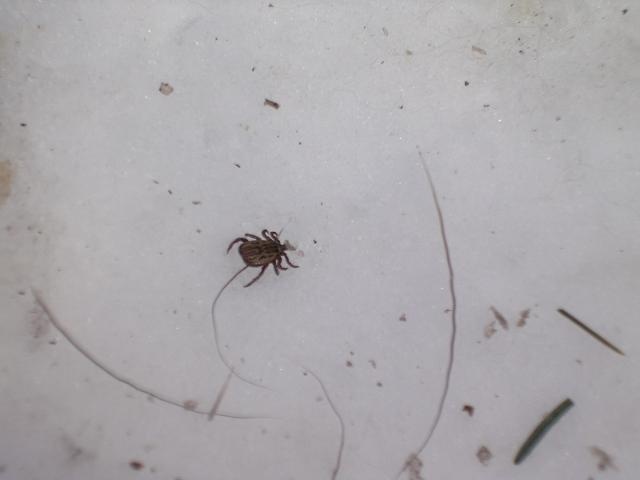
From Times Union Brian Nearing
This frigid, snowy winter may be keeping many people indoors, but is likely doing little to kill slumbering hordes of ticks that can carry Lyme disease.
And infected ticks that survive winter to emerge each spring, looking for something to bite, are showing up earlier as climate in the Northeast gradually warms.
“If this persists, we will need to move Lyme disease Awareness Month from May to April,” said Richard Ostfeld, a research scientist at the Cary Institute of Ecosystem Studies in Millbrook, Dutchess County.
His research on climate change and population of the black-legged tick — which carries Lyme and other dangerous illnesses — was published this week in the peer-reviewed Journal of The Royal Society, which is the national science academy of the United Kingdom. The research built on dozens of scientific studies during the last two decades from North America, Europe and Asia, where ticks are expanding ranges steadily northward and into higher elevations.
“Many people are asking me whether this snowy winter is clobbering the ticks, so we will not have as many coming out this spring,” said Ostfeld. His answer? No.
That is because heavy snow is acting as a kind of insulation to protect ticks slumbering near ground level from the worst of the cold, he said.
Called subnivean space, this natural refuge also promotes survival of the white-footed mouse, a tiny mammal that also spends its winter beneath the snow and serves as a carrier for bacteria that causes Lyme disease, as other illnesses like encephalitis, human babesiosis and granulocytic anaplasmosis.
“As the mice go, so go the ticks,” Ostfeld said. When the snows melt, mice are preyed upon by a stage of tick called nymphs, some of which in their larval stage the previous fall had fed on infected mice. Smaller than a poppy seed and difficult to spot, such infected nymphs “are the dangerous ones,” said Ostfeld.
In the Northeast, nymphs used to emerge in May, but that is happening earlier and earlier as winters have shortened.
Now, nymphs come out in April, about three weeks earlier than the average in the early 1990s.
“Here in the Northeast, warming is already having an effect, and people need to be tick-vigilant before May, as potentially infected nymphal ticks are searching for their blood meals earlier and earlier,” said Ostfeld.
Other parts of the research was based upon data from more than 53,000 mice, 12,000 chipmunks, 403,000 larval ticks and 44,000 nymphal ticks collected from forests at the Cary Institute’s 2,000-acre campus.
Other authors of the research included Taal Levi of Oregon State University, who did his post-doctoral work at Cary, as well as Jesse Brunner of Washington State University. Support also came from Felicia Keesing of Bard College, and Cary Institute Senior Research Specialist Kelly Oggenfuss.
“Forecasting how climate change shapes tick-borne disease risk requires taking a suite of factors into consideration, among them habitat loss, urbanization and movement of people and animals,” said Ostfeld. “We are making inroads, but protecting public health will require investment in multidisciplinary, collaborative work that takes advantage of new technology and modeling approaches.”
